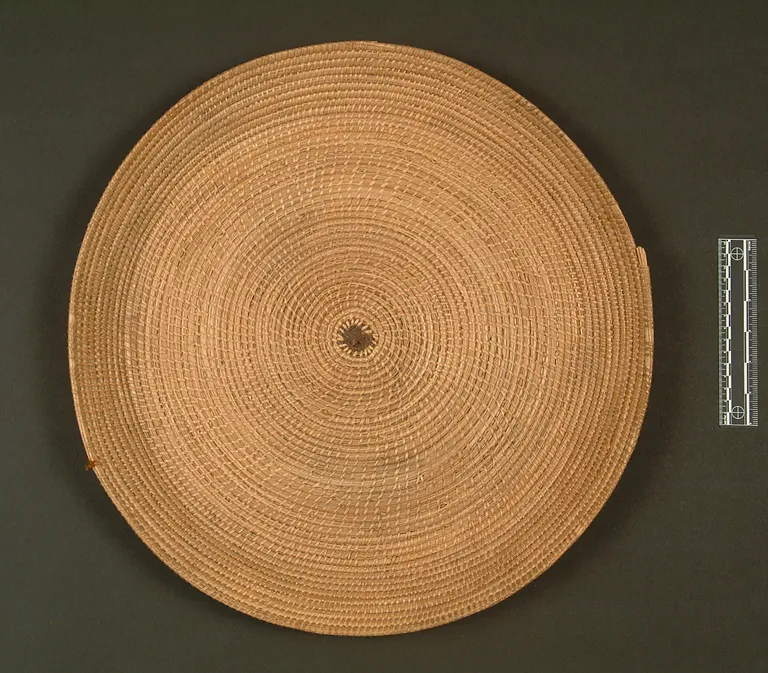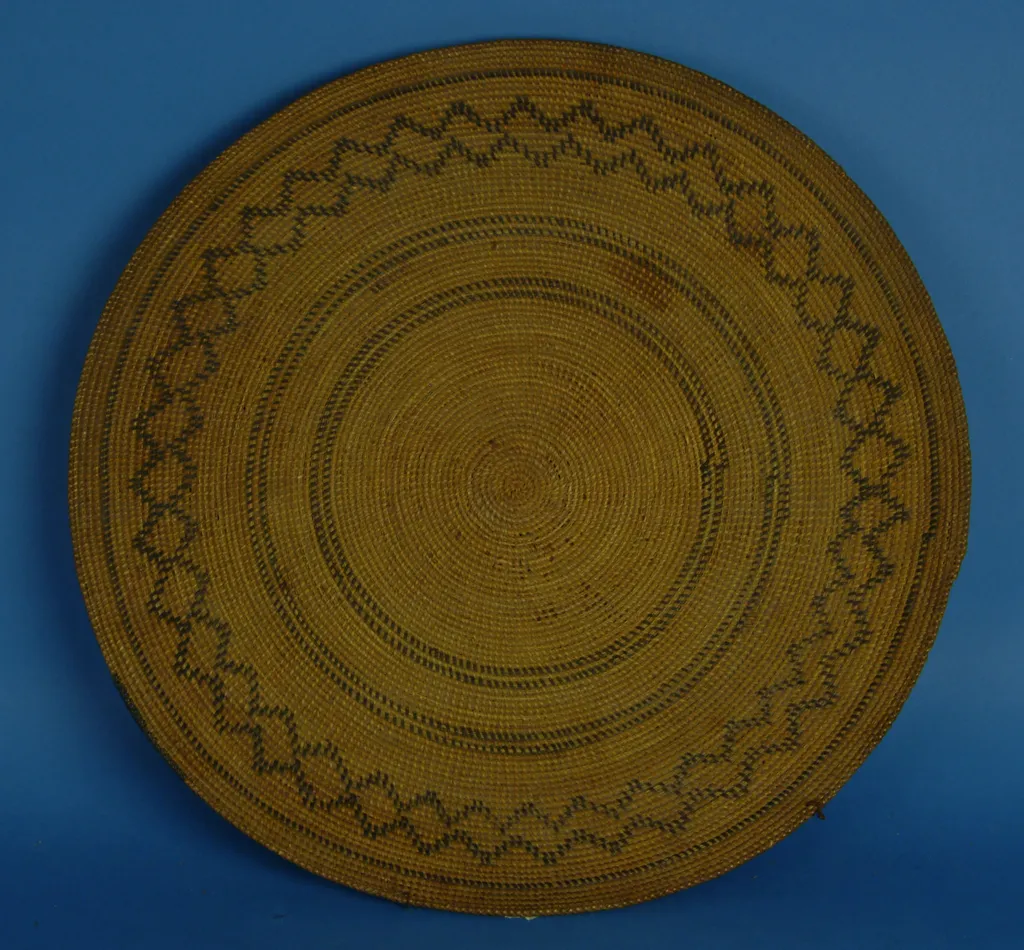Image


Akimel O’odham Basket Trays
Provenance: Gila River Reservation, Arizona
Accession Number: 015930
Date Acquired: 1885
Culture: Pima, currently known as the Akimel O'odham (‘River People’), and sometimes as the Gileño, or Gila Pima.
Narrative: Hypnotizing Patterns & Textures
These

baskets were made by the Akimel O'odham (formerly called the Pima), an ethnic group that is part of the Tohono O'odham Nation in South Central Arizona and Mexico which numbers approximately 20,000 individuals. The Piman language is among 100 or so native languages spoken north of Mexico that are under immediate threat of extinction. However, it is still spoken, written, and taught from primary school on (Lewis, 2009).
With

their striking patterns, smooth lines, and precise craftsmanship, baskets like these captivated nineteenth-century anthropologists and collectors around the world. The Akimel O'odham (also known as the Pima) made more and more of these baskets as increasing numbers of tourists, scientists, and collectors traveled by the new railroad lines to the southwestern United States. Thousands of baskets remain today in museums and private collections from the great period of basket collecting that began in the 1880s (Hedges, 1997:54). While basketry is still in practice by many Indigenous communities, other non-native vessels make up the majority of daily use (Hedges, 1997:54).
Devil's Claw in the Details
Once made from wild plants including grasses, rushes (Juncus sp.), willows (Salix sp.), and cattails (Typha sp.), these baskets drove the domestication and stewardship of one plant in particular: devil's claw (Proboscidea sp.), which produces the black patterns woven into the baskets. Long supple strips, up to twelve inches long, protrude like claws from the pods, clearly adapted to latch on to passing animals and humans in order to disperse the seeds. Weavers collected the dry pods from the desert then soaked and split them from their points downward. Weavers then buried the splints in wet earth to keep the fibers pliable while the weaver worked. Devil's claw splints are so tough that they out-wear other strong fibers including willow (Curtin, 1984). Originally relying on two wild plant species (Proboscidea parviflora and Proboscidea althaefolia), the Akimel O'odham domesticated a third form, now formally named P. parviflora var. hohokamiana.
Cattail (Typha domingensis and Typha latifolia), the primary plant used in the baskets' foundation, is called oodeak in Piman. This familiar plant grows in wetland habitats within the Sonoran Desert. Cattail used in basketry is gathered in August when green and peeled and split into halves. The split stems are then spread on the ground to dry and bleach under the hot sun. Once dry, they are twisted with the black strands of devil's claw to start the center of the basket (Curtin, 1984).
Palmer's Collection
Palmer

collected this basket set on an eight-day visit to the Gila (pronounced "heela") River Reservation established in 1859. The Gila River is a major tributary of the Colorado River. It flows west from Gila Mountains of northern New Mexico to its mouth at Yuma, near the Mexico border (Felger 2000:570). Little is known about this particular visit by Palmer among the Akimel O'odham; of his 1885 field notes, only those for the grasses have been preserved.